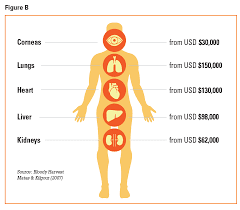If a group of fraudsters are working 50 or even a 100 names at a time in a loan scam, and they are successful in 20 or even 10 per cent of the cases, “it is highly, highly lucrative”
Lukrezia Buzanic has lived at the same address in Mississauga, Ont., for 28 years. Her husband died in 2009, and her son just bought a condo. She would like to sell her split-level brick home with a pool in the exclusive Gordon Woods neighbourhood, and estimates it’s worth well over a million dollars.
But in an astounding case of identity theft she’s been fighting for years, she can’t list the property because Manulife Bank put a lien on it for $640,000 in January 2012.
The year before, she renewed her mortgage for a little more than $200,000 at Laurentian Bank. But someone posing as Buzanic applied for a separate $640,000 mortgage at Manulife on Sept. 26, 2011, as well as a credit card with a $15,000 limit.
They used a driver’s licence with her name on it, as well as fake T4 slips in her name. Through her lawyer, Buzanic found out the renewal date on the licence was wrong; the mortgage application stated she had lived at the Mississauga house for 10 years when Buzanic had been there for 22; and her employer was listed as Mega City Realty Corp., even though the business closed in 2007.
It wasn’t until August 2012, when the fraudster started skipping payments on the credit card and the mortgage, that Buzanic says she started getting 12 to 14 calls a day at home from the bank’s bill collectors.
“I can’t begin to explain to you, because I get so angry and nervous, about how many times a day they called me, “ she says. “I lost 45 pounds in less than three months. I’ve never seen a bank with such gangster tactics, honest to God.”
Buzanic’s identity theft and mortgage-fraud story is all too familiar to Jennifer Fiddian-Green, a Toronto forensic accountant who went through the same thing in 2006.
She was sitting at her desk in her downtown Toronto office when she answered the phone, only to hear an aggressive collector on the other end, demanding payment on a mortgage she didn’t know existed.
“I said, ‘Who the hell are you and what are you talking about?” Fiddian-Green recalls.
Unlike Buzanic, who works in sales, Fiddian-Green investigates fraud for a living and is an anti-money laundering specialist. She immediately called the bank, and started following the paper trail to discover not one, but two mortgages in her name, at two separate financial institutions, totalling more than $500,000 on a property purchased in her name in Brantford, Ont.
“When the collector told me he found me in 10 seconds, I asked the bank why they didn’t Google me before they loaned the money. I really challenged the company.”
Fiddian-Green, a partner with Grant Thornton LLP, an accounting and business advisory firm, still has no idea how identity thieves got her personal information, but they had her name, Social Insurance Number, two to three years of fake tax returns, and a fake citizenship card.
“My message is if this happens to you, have some confidence,” she says. “No. 1, you are not out any money. You are going to help the lender get their money back. That’s what I did. I signed an affidavit saying this was a fraudulent application and it wasn’t me. I assisted their process as they filed a claim under their insurance.”
After investigating her case, Fiddian-Green found out the perpetrators had applied and been turned down for mortgages at 10 other financial institutions.
To this day she doesn’t know how the fraudsters got her information. They could have stolen a piece of mail from the Canada Revenue Agency from her mailbox. She says the Equifax database, recently the subject of a giant hack this summer, had also been breached around the same time; it could have been accessed then.
The forensic accountant spent 300 hours investigating her case and cleaning up her credit report, and in the end Toronto police linked her mortgage fraud to a ring of identity thefts. She says they charged a person, but he got two years less a day and is walking the streets.
What she learned from her investigation is that if a group of fraudsters are working 50 or even a 100 names at a time in a loan scam, and they are successful in 20 or even 10 per cent of the cases, “it is highly, highly lucrative.”
Although no one can protect themselves from identity theft given how many service providers, financial institutions and government offices have your personal information, Fiddian-Green advises people to check the activity on their Equifax and TransUnion credit reports to see who has looked at your profile. “If you haven’t applied for any credit, that list should be pretty short,” says Fiddian-Green. “My list had three pages of activity.”
The takeaway for Fiddian-Green is that institutions have to do better when screening applications for large sums of money, and insurers of those institutions should insist on it. In her case, she was not out any money, because insurance covered the claim.
Buzanic was not so lucky. She says it wasn’t until the bank’s insurer denied its claim that Manulife came after her for the full $640,000 plus interest and costs, filing a statement of claim in Ontario Superior Court on Dec. 3, 2014. She filed her statement of defence in January, 2015. And then she waited.
“Every time I called [my lawyer], they kept telling me Manulife Bank was refusing all the discovery dates,” she says. “They’re suing me, but they don’t want to go to court.”
Tapped out and unable to borrow against the equity in her home, she had to ask her 80-year-old mother for $30,000 to pay back taxes on the property. “It was either pay the lawyers or pay my bills,” she says.
But after Global News covered Buzanic’s identity theft story in July, Manulife offered to remove the lien at no cost. “That was in July and it’s now November and the lien is still on my house.”
On Oct. 3, Buzanic sent her counter offer: She wants $50,000 in general damages, legal costs of more than $22,000 and the lien removed on her property.
Although Manulife spokesman Sean Pasternak can’t comment on “specific client transactions,” in an emailed statement he says, “Manulife Bank takes all allegations of fraud very seriously and continuously implements robust measures to protect the best interests of its customers.”
On Oct. 31, Manulife contacted Buzanic’s lawyer to say they wanted more information on her legal costs. The lawyer told Buzanic they seemed to be considering her claim, but warned her any settlement was likely to be far less than her counteroffer.
Buzanic says she’s “not jumping up and down” yet.
“It’s been five years, already. I’m in so much debt it’s not funny. I haven’t been able to work from all the stress.”
Chronicles of Monte Friesner - Financial Crime Analyst
Contributed by National Post
Written by Kim Honey










